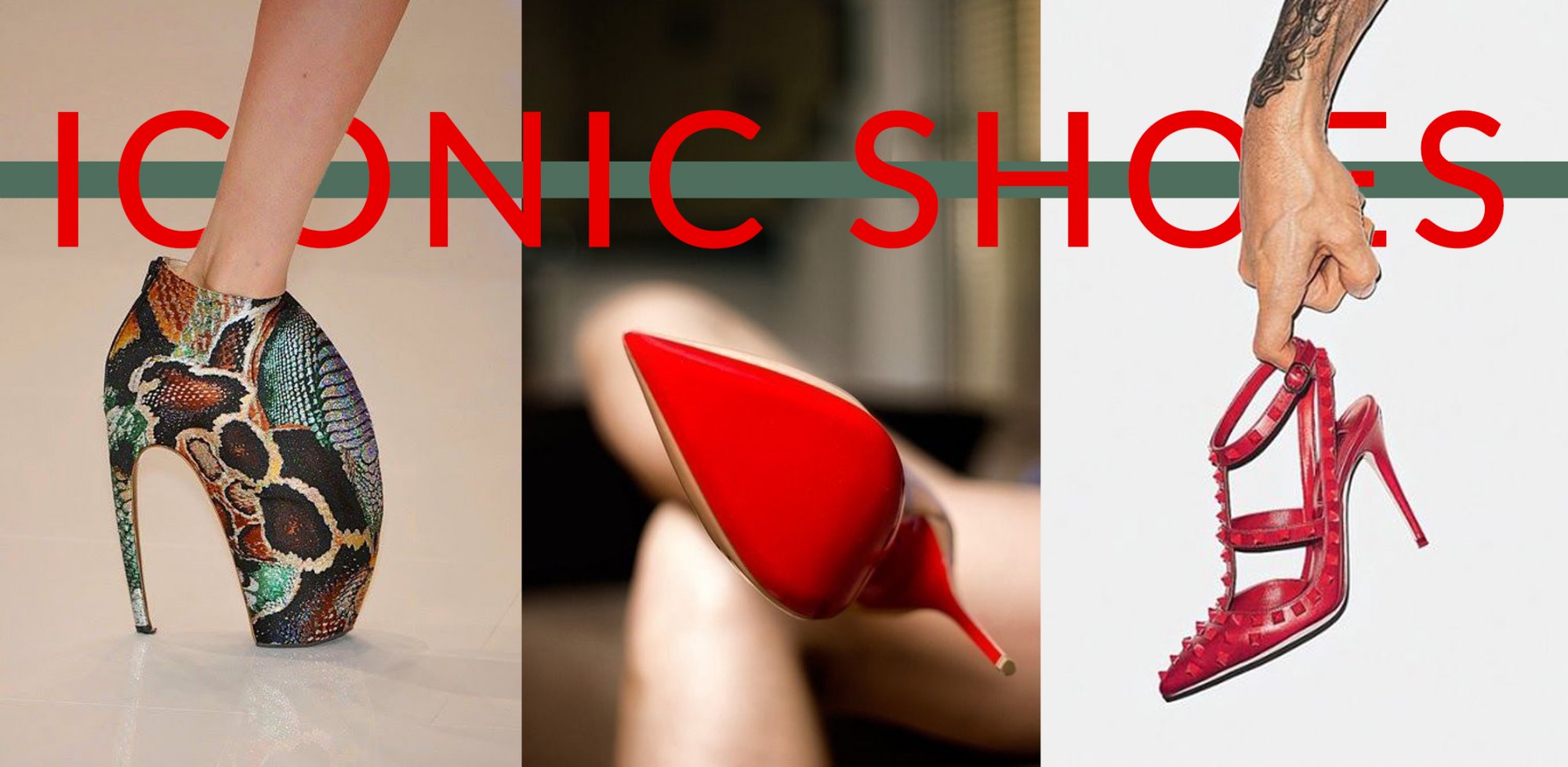Shoes: One word, a thousand meanings. From the fashion lovers, who the more they have, the more they want, to the different cultural meanings that they had over the centuries and in different countries, shoes have always played an important role in our lives. They give us a certain image, according to the moment in which we wear them, they make us feel confident or part of a group, and they help us walk, or even run, towards the realization of our dreams. We wear them every day, we buy them all the time but nonetheless, we know very little about their history and that of the iconic models, those that every fashion addicted would like to buy and that they admire whenever possible.

Let’s start with the prehistoric times, literally. The origin of shoes goes back to the Palaeolithic Age, when leather, still considered fundamental in the sector, was established as the main material. For the Ancient Egyptians, shoes were a prerogative of the upper class, while slaves and poor people walked barefoot. In the same way, Greeks and Romans elevated sandals to a status symbol: just think about the models with laces up to the knees. For all these civilizations, certain colors were associated with a different social class (such as red and yellow, used exclusively for nobility’s shoes).
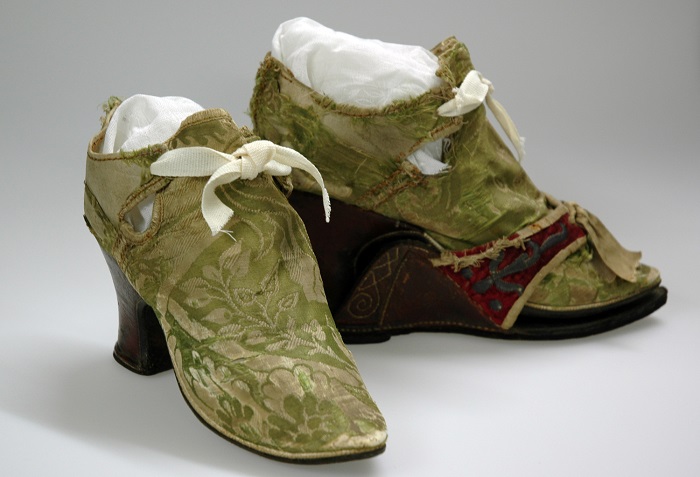
During the following centuries, the class distinction was maintained and it was determined by the materials and the presence of elaborate and precious details. It was not unusual for men and women to wear the same models, including heels: just think about the Baroque kind of shoes or those worn by Louis XIV and the whole aristocracy until the beginning of 1800. Some monarchs have contributed to the success, or to the disappearance, of certain models: the already mentioned Louis XIV carried exaggerated heels to hide its poor stature, while Henry VIII gave the order to produce only shoes wide at least 6 cm in order to hide his gout.
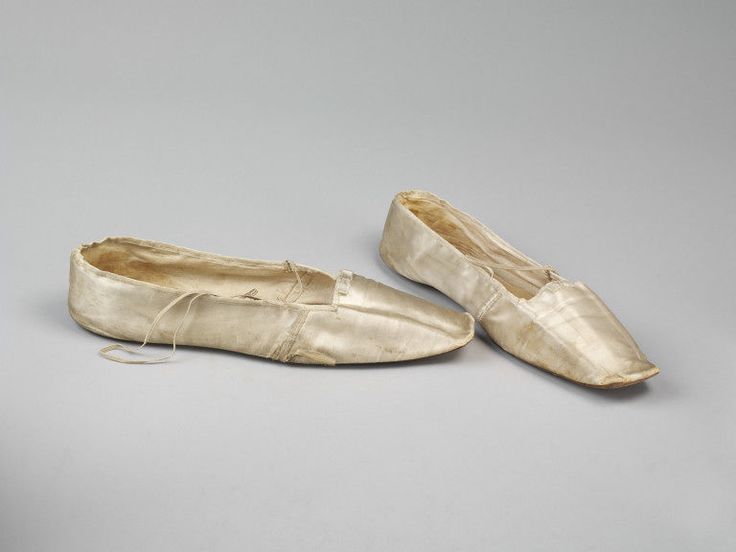
In 1800 finally comes a division between male and female models, both in terms of style and materials. During those years, the use of boots grew exponentially, while the male heel was fixed at the measuring of 2.5 cm. Instead, the differentiation between right and left shoe goes back to 1818: thanks to this, the concept of comfort is finally introduced next to the one of practicality.
In 1900, the shoemaking industry grows exponentially following the introduction of certain technologies that led to the production of more original models. If the male models remained almost the same even after World War II, the female ones widely grew in terms of style and variety, a growth due mainly to the birth and evolution of the most famous fashion brands, which started to produce shoes next to clothes and accessories. Heels returned to increase their length, and reached incredible heights in the ’70s with wedges, just for decreasing in the ’80s and ’90s.

Nowadays there are shoes for every occasion, taste, and preference. The main idea behind the work of most stylists is no longer focused on the concepts of comfort and function, but rather on those of aesthetics and creativity. In this regard, there are now iconic luxury models that keep on being trendy, whether they are dating back to the beginning of 1900 or newly created: these are the shoes that we all want in our wardrobe. As Bette Midler said: “Give a woman the right shoes and she can conquer the world” and, with a pair of the shoes listed here, we are sure that every woman would be able to conquer whatever she wants (including the world)!
SALVATORE FERRAGAMO
Rainbow
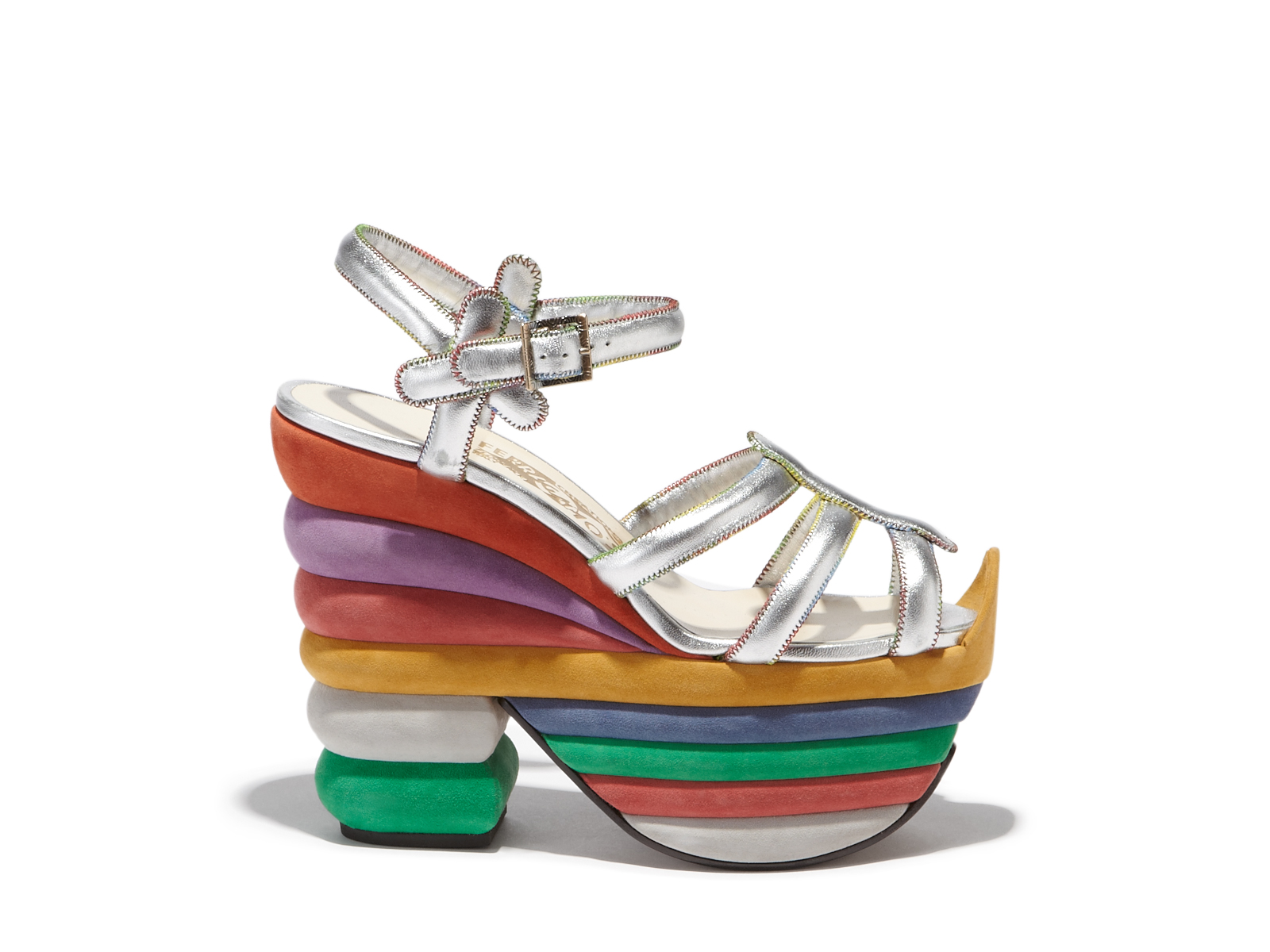
The wedge is an invention of Salvatore Ferragamo and it was born in a dramatic period of Italian History, the Fascist Era when Italy tries to walk down the path of independence. Salvatore, who is in Florence after a long stay in the United States, has no longer access to some essential materials for his creations. At the same time, thanks to his feet-focused anatomy studies made in the United States, he realizes that all the weight of the body rests on a single point, placed under the foot arch, from which it is then distributed at the extremities. For this reason, he invents and patents in 1931 a metal foil, the “Cambrione“, a system of reinforcement for the foot’s arch, at the same time light and capable of supporting the body. Immediately after, he completely closes the space between the heel and the sole using a material like the shaped Sardinian cork. That is the creation of the wedge, destined to become one of the most famous inventions of the 1940s fashion, widely appreciated and worn even today, and the creation, in particular, of the Rainbow sandal dedicated to Judy Garland. Made with a kid’s upper, its high wedge is cambered with several layers of cork covered with suede. Initially labeled as “orthopedic shoes“, they actually earned a great success, first in America and then in Italy.
In 1993 to Christian Louboutin, who was working as shoemaker for about two years, came the idea of creating a shoe inspired by the flowers of Andy Warhol: “The prototype, a pink heel decorated with a flower of cardboard, had arrived from Italy and I was very happy, because it was similar to the drawing,” recalls Louboutin ” but the drawing still had something more and I could not understand what. I stared at this big black sole, and then, thank God, I noticed a girl, my assistant, who was putting a red nail posh on her fingernails.” Louboutin grabbed the nail posh and stretched it out on the sole of the prototype. “That’s the drawing!” he screamed. Louboutin then decided to paint his soles red as if it was a statement. “I thought: Oh my God! The red soles are so flirtatious, and my clients have asked me not to stop.” This statement attracted his first important client, Princess Caroline of Monaco. “The glossy red color of the soles has no function but to identify them to the public as mine. I chose this color because it is engaging, flirtatious, memorable, it is the color of passion. ” Fortunately Louboutin no longer uses red nail posh to paint shoes, but he produced a nail polish called “Rouge Louboutin” which is exactly the same color of his iconic Soles.
CHRISTIAN LOUBOUTIN
Red Soles
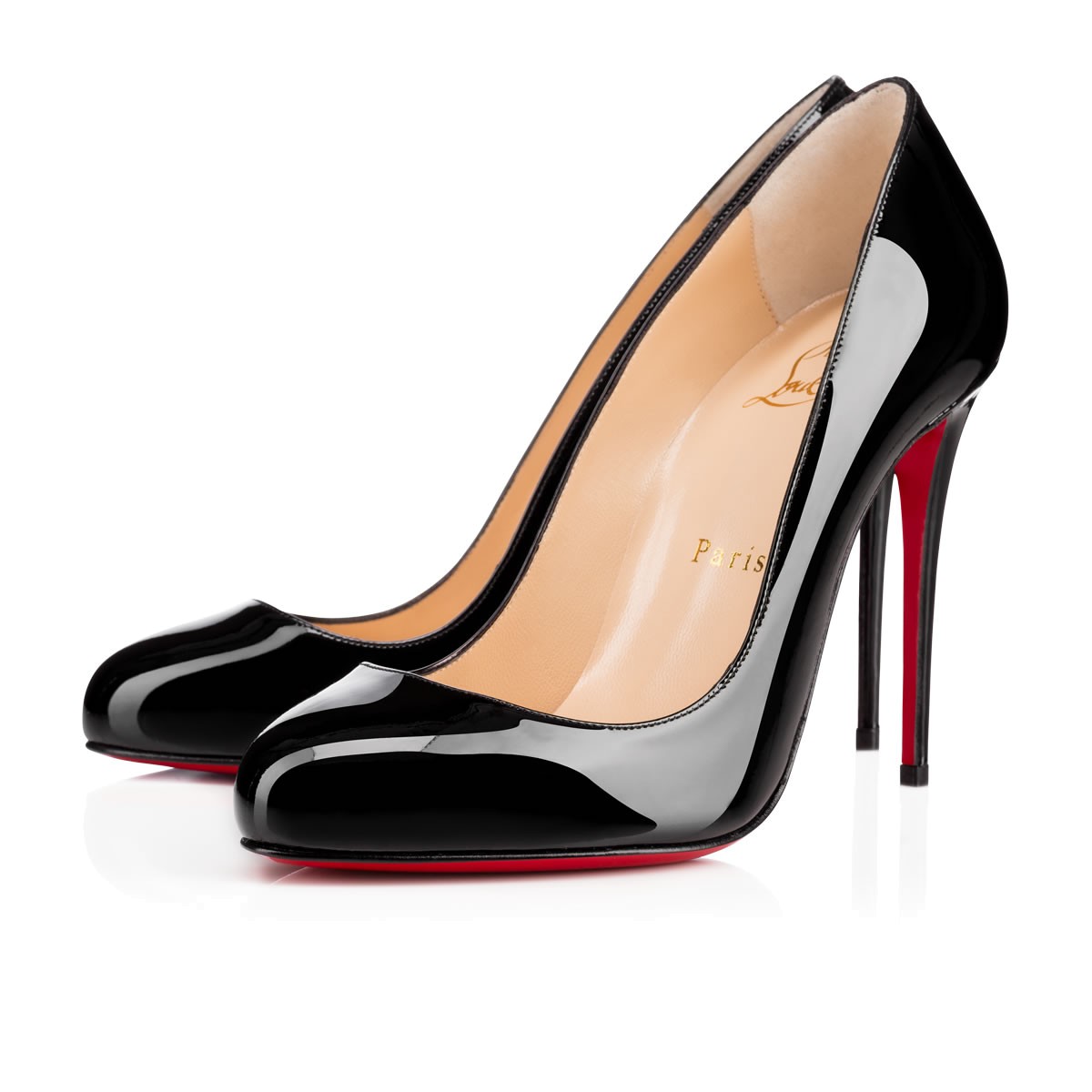
ALEXANDER MCQUEEN
Armadillo

The “Armadillo” boots, 30 cm high and belonging to the “Plato’s Atlantis” Collection (S/S 2010), is one of the most important footwear designed by Alexander McQueen. Designed to lengthen and extend the leg, they present the oxymoronic encounter between the pointed heel, reminiscent of a claw, and a soft front, like the one of a tiptoeing ballerina. Each “Armadillo”, named after their shape, that reminds this animal, was sculpted by hand from the wood: the coating and the upper were produced individually and require four hinges (two for the lining and two for the upper) to allow the foot to enter. Although challenging to wear because of their height and weight, they present a sort of bulge over the toes that allows the woman to lift the boot more easily when walking. Armadillo shoes are undeniably the strangest and most surprising thing created in the last few years. Presented during the first fashion show broadcasted in live stream and online, people had several doubts about their practicality. One of the models later said, “I couldn’t walk. So I went to Lee (Alexander) and I told him- I can’t walk with these shoes, it could be a disaster. What happens if the girls fall?” And he told me: “If they fall, they fall. ” Despite the superficiality that these words could suggest, the stylist looked at all his models in the eye before the show to tell them how proud he was, how perfect they were… He gave them so much confidence that the unthinkable happened: none of them fell. And McQueen, then, realized that the world needs only fantasy, not reality.
“Shoes help women to transform themselves.” Manolo Blahnik is one of the most influential designers in the world, but he is also the most atypical shoemaker of his generation. Today he’s admired for his unique and elegant creations, and his reputation would not be the same without the real cult that Carrie Bradshaw dedicated to him in the TV series “Sex and the City”, exemplified by the iconic Hangisi. These high-heeled satin pumps with sharp spikes are instantly identifiable thanks to the large square buckle adorned with Swarovski crystals on the front. The inspiration for these shoes comes from the Italian courts and the figures of Napoleon, Giuseppina, and Paolina Bonaparte.The shoes have everything they need to be identifiable as an icon: a sophisticated balance between chic and sexy, without forgetting comfort.
MANOLO BLAHNIK
Hangisi
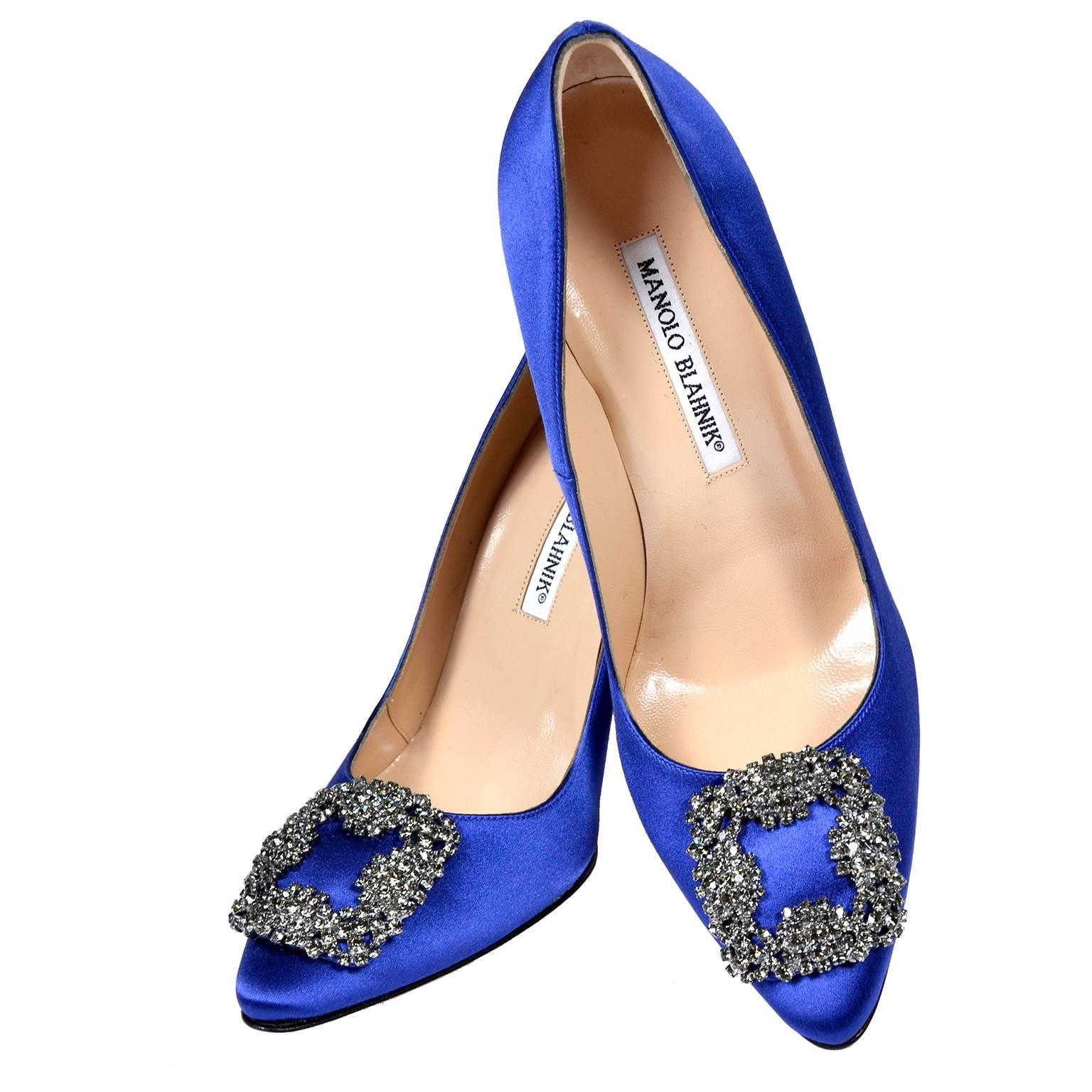
VIVIENNE WESTWOOD
Pirate Boots

“Shoes must have very high heels and platforms to put women’s beauty on a pedestal.” Said Vivienne Westwood who, with her “Pirate” collection in 1981, imposed herself on the fashion scenes. The collection consists of colorful looks, bandanas, hats worth of a real captain, and the Pirate Boots. Handmade in London, they are presented in every collection and they have now become the emblem of the “relaxed” style. A flexible upper part gives the boots a totally soft and casual look. Since the leather is not treated, the color gets hotter as time goes by. Vivienne Westwood’s shoes, and Pirate Boots, in particular, have undeniably become icons of the “Made in England” fashion. They require such a making process that, if not available, they have an expecting time of 6/8 weeks!
2010: The two creative directors of Valentino, Pierpaolo Piccioli and Maria Grazia Chiuri, launch the now iconic Rockstud shoes, adding a rebellious and youthful note to the classic and elegant spirit that has always marked the brand. With hinted tip, thin leather straps, covered with studs that surround the foot and ankle, they became the IT-shoes of the year in 2014. In their three variants (10 cm high, 6, 5cm high, or ballerina), these shoes have managed to conquer the hearts of everyone. The small golden studs have let a breath of fresh air inside the Maison, managing at the same time to live with the history and charm of the brand. The evolution of the model over the years seems to perfectly embody the guideline proposed by the two new creative directors: an incisive, sensual and sometimes dark vision of Valentino, but always graceful. There is a balance between strength and delicacy; the line is synthetic, precise and the sense of elegance expresses the idea of contemporary. From the first nude or black models with golden studs, there are now many other versions: fluorescent colors, tone-on-tone studs, PVC made, rainbow Print. The final touch? Terry Richardson‘s participation as an exceptional testimonial to the latest advertising campaigns.
VALENTINO
Rockstud
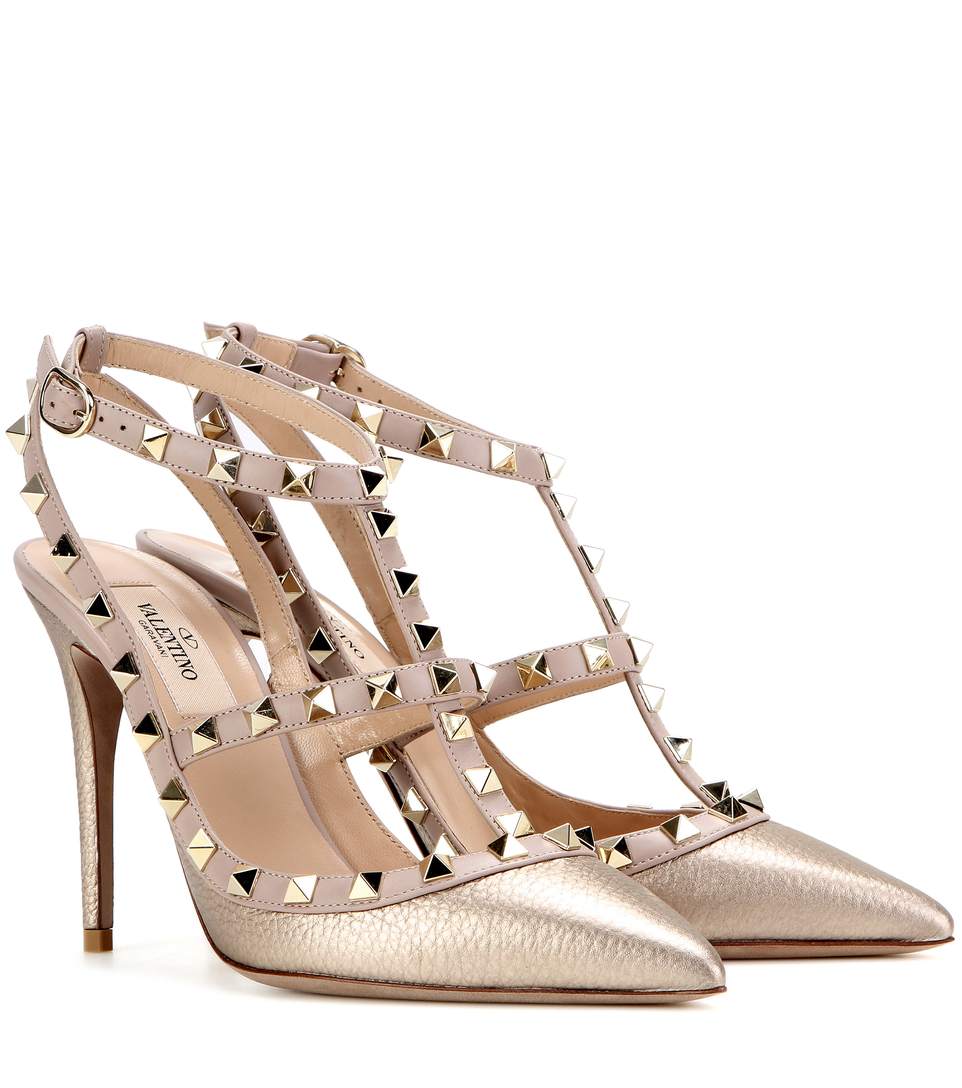
YVES SAINT LAURENT
Tribute Heels

Francesco Russo started to work as a shoe designer for Yves Saint Laurent in 2000. Alongside Tom Ford and Stefano Pilati, he gave birth to several unique creations for YSL, including the Tribtoo, the Cage Boots, and the elegant Tribute Heels. Launched in 2009, these sandals show the influence of fetish footwear in terms of design, with their high heel, the use of varnish and the upside on the front. And it’s not a chance that we are speaking about fetish since they are inspired by the kind of shoes usually worn by the pole dancers. The heel’s shape favors the support to the pole, while the general shape of the shoe allows a greater height thanks to which the dancer can lean forward with her body. Revisited in a feminine key without losing their sensual allure, they are comfortable despite the high heel. As stated by their designer Francesco Russo, “shoes means sex.”
Aldo Gucci, the son of Guccio Gucci, in 1953 decides that the brand that bears the family name should also enter the footwear market. The first model produced by the company is a practical unisex moccasin, made of leather or suede and decorated with a metal clamp inspired by the clamps and bridles used for horse riding. A status symbol without being just as superficial, they are able to define a style without relying on anything else. In 1985, they even became part of the permanent collection of the Metropolitan Museum of Art in New York. All the models show the application of the famous clamp to a wide range of materials, such as varnish, python, ostrich, crocodile, satin and canvas, as well as the combination with other classic symbols of the Maison, such as the striped tape, the bamboo, and the double GG. The revolution comes in 1989 when the moccasin also becomes a female footwear. A heel was applied to the back of the moccasin in order to enhance the leg’s shape and the silhouette. The Gucci Maison in the latest collections has renewed this model with new textures and shapes, without forgetting the glorious past of this practical and unconventional footwear.
GUCCI
Horsebit Loafers


